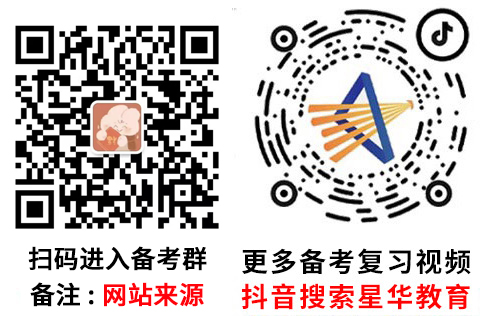广东高职高考英语情景交际考点讲解
下面我们跟着广州星华教育老师一起来了解一下广东高职高考英语情景交际考点讲解,希望对大家学习有帮助。
命题规律及趋势
话题---社会交往,态度,情感及其他,社会交往是交际用语考查的重中之重。交际用语是每年高考英语试卷单项选择部分的必考内容,通常都会有1—2个题目。题干的呈现形式通常是对话,挖空设项多出现在交际应答里。
突破方法:
1. 熟悉句型结构,增强理解能力。
2. 进行广泛阅读,积累各种情境中交际应酬的用语从而提高交际能力。
3. 熟悉英中两种文化差异,掌握两个不同民族的交际习惯方式。高考中,经常出现“貌似”正确的“中国式”应答的选项,
4. 多看英文电视,电影,多跟外国人交谈,从而提高英语交际运用能力。
做好交际应答,要注意以下几点:
从高考的意义来说,交际应答尽管只是一两分的问题,可在日常的英语应用中,它却十分重要,千万不可掉以轻心。做好交际应答,要注意以下几点:
一、交际应答要防止“中国式”答语的陷阱
例如:——It’s getting late. I'm afraid I must be going now.
——OK. ______.
A. Take it easy B. Go slowly C. Stay longer D. See you
答案D。本题考查的交际功能是道别用语。彼此分手可以说“See you (again, after, etc.).”“Take care.”“Good-bye.”“Bye.”等。选项B,“慢点走”是典型的中国式应答。
二、交际应答要把握不同选项的适用语境
例如:——I'm taking my driving test tomorrow.
——____!
A. Cheers B. Good luck C. Come on D. Congratulations
答案B,用来表示在别人做事情之前表达祝愿。A 选项是“干杯”,与情景不适宜;C项的意思是“过来”、“加油”的意思;D项表示“祝贺”。因为是明天参加考试,还不知结果,因此表达“祝贺”不合适。
知识清单
高中阶段出现的交际功能用语,如问候、祝愿、介绍、告别、感谢道歉、邀请、约会、希望、请求、发表观点、购物、就餐、使用交通工具等,都要有准确的把握。
1.约会表达用语小结
清清楚楚地表达所要约会的时间和地点,明明白白地进行预定的活动。
[典型表达]
Are you / will you be free this afternoon? 你今天下午有空吗?
How about tomorrow morning? 明天上午怎么样?
Shall we meet at the school gate?我们在校门口见面好吗?
Yes, I’ll be free then. 好,那时我有空。
No, I won’t be free then. But I’ll be free tomorrow.
不行,那时我没空儿。但是我明天有空。
All right. See you then. 好,那时见。
How about going for a drink together? 一起去喝一杯怎么样?
What time shall we go? 我们什么时间去?
2.赴宴就餐用语小结
英语中关于赴宴就餐及殷勤款待的常用交际用语有多种。
[典型表达]
Would you like to have supper with me?
你愿意和我一起吃晚饭吗?
That would be nice. Let’s fix a date.
那太好了,咱们定个日子吧。
I’d love to, but my brother is coming.
愿意,但是我哥哥要来。
I’d like to invite you to dinner at my flat.
我想邀请你到我公寓吃饭。
What would you like to eat / drink?
你想吃(喝)点什么?
What / How about another piece of bread?
再来一块面包怎么样?
Would you like some more beef? 你想再吃点牛肉吗?
Do you want to have some chicken?
你想吃一些鸡肉吗?
I’m full. / I’ve had enough. 我饱了。
I’d like two eggs and a glass of milk.
我想要两个鸡蛋和一杯牛奶。
Yes, please, just a little. 好的,只要一点点。
Help yourself. 请自便。/ 请随便吃。
Make yourself at home. 不要客气,请自便。
3.安慰表达方法小结
当别人失意、失败、担心、忧虑时,我们应该给以适当的安慰,使之振作、振奋。你可以说:Don’t be afraid. Cheer up. / Come on. You can do it.等。
4.同意与反对表达方法小结
英语中,当对方提出某种观点、意见或请求时,你要表示恰当而具体的态度。究竟是同意还是不同意,要有个明确的答复。
5.表扬与鼓励表达方法小结
在西方,人们总会适时地给对方以表扬和鼓励。人们对于别人的赞扬一般会表示高兴,并且“Thank you!”不离口。
6.问路表达方法小结
谁都有迷路的时候,谁都有找不到目的地而犯愁的时候。只要你会使用恰当的问路表达方式,前途肯定会是光明的。
[典型表达]
Excuse me. Where is the Pacific Hotel?
对不起,请问太平洋宾馆在哪儿?
Go down this street until you see the tall building.
沿着这条路走,直到你看到那个高楼。
Does this road lead to the Agriculture Bank of China?
这条马路到/通向中国农业银行吗?
No. Turn right at the first crossing.
不,在第一个十字路口向右拐。
Excuse me. Which is the way to the No. 1 Middle School?
打扰一下,请问哪条路到一中?
You can take No. 503 bus. 你可以乘503路公交车。
Excuse me. Could you tell me the way to the airport?
打扰了。你能告诉我去飞机场的路吗?
It’s over there. It’s in that direction. 在那儿,就在那个方向。
Can you tell me how to get to the People’s Park?
你能告诉我怎么去人民公园吗?
Sorry, I don’t know. I’m a stranger here.
对不起,我不知道。我也是刚来这儿。
7.介绍表达方法小结
学会用得体的英语去巧妙地介绍自己和别人,能够使气氛融洽,使大家交流轻松愉快。
[典型表达]
May I introduce you to my friend Hang Kai?
我可以把你介绍给我的朋友杭凯吗?
Please allow me to introduce you to my classmates.
请允许我把你介绍给我的同学。
I’ d like you to meet my friend, Maria.
我想请你见一见我的朋友玛利娅。
May I introduce myself? I’m Jim Green.
我做一下自我介绍好吗?我是杰姆?格林。
How do you do? My name is Cui Hengbiao.
你好,我是崔恒标。
I’m Kate. Happy to know you. 我是凯特,很高兴认识你。
I’d like you to meet Jim. He’s a friend of mine.
我想请你见一下吉姆,他是我的一个朋友。
8.告别表达方法小结
相见时难别亦难,友情再深终有一别。不要忧伤,不要难过。我们既然要离开,就得学会用地道的英语来委婉地表达我们的离别之意。
[典型表达]
I’m afraid I must be leaving now.
我恐怕得告辞了。
I must be off now. 我必须得走了。
It’s time I met my brother. I have to go now. 是我去见我哥哥的时候了,我现在得走了。
I’m sorry I have to go now. 对不起我得走了。
I think it’s time for us to leave now.
我想现在是我们告辞的时候了。
It was nice meeting you. =Nice to have met you.
遇见你真是太好了。
9.提供帮助用语小结
提供帮助一般分两种情况:职业用语和其他情况。当拒绝别人的帮助时,记得说一句Thank you all the same.或者That’s very kind of you, but I can manage it myself.
10.打电话用语小结
许多人害怕用英语打电话或接电话,一是因为自己的听力和口语水平不够,还有一个重要的原因就是电话英语中有许多固定表达方式。
11.责备和抱怨用语小结
在对方做错了事或者没有能够做好某事的时候,我们可能会去责备或者抱怨。值得注意的是,语气要委婉。当我们受到别人的责备或者抱怨时,我们也要表示歉意。
[典型表达]
He is to blame. 他应负责任。
She blamed him for the traffic accident.
她为交通事故责备他。
He shouldn’t have done it.
他本不该干那件事的。
Why can’t you do something about it?
你为何不能为那件事出点力?
—He couldn’t find the place. 他找不到那个地方。
—You told him how to get there, but perhaps you should have drawn a map.
你告诉了他如何去,但是也许你本应画张地图。
12.建议表达方法小结
如果你所建议的内容是对方容易接受的,且双方关系比较密切,则回答可以很直接、随意;如果双方关系一般,则回答需要委婉。在拒绝对方的建议时,一般要给出理由。
13.邀请表达方法小结
对于别人的邀请如Would you like ...? / Can you come to ...?等要作出明确的答复,同意还是拒绝要说清楚,同时不要忘了感谢。如果拒绝的话,要表示歉意最好再说明缘由。
14.祝贺表达方法小结
日常生活中,我们经常接受别人的祝愿、祝贺,同时我们也应学习去祝愿、祝贺别人。有时还有共同的祝愿(The same to you.)。祝愿的表达方式很多,但是一定要用得恰到好处。15.希望与愿望表达方法小结
当希望别人做某事或者不愿意让别人做某事,或者表达自己的一种希望、愿望时需要恰当用词,这样才能准确地传达自己的意图。
16.感谢与应答表达方法小结
英美人几乎在一切场合都对别人的帮助、赞扬,哪怕是微不足道的事表示感谢。表达感谢很简单,但是要恰到好处却不是容易的。
17.询问信息表达方法小结
在真实的交际当中,对于怎样询问信息以及怎样回答对方的询问,是要做出思考的。询问用语要得体,回答信息要贴近事实。
现就特定语境中的问与答及中、英语言习惯和文化背景差异两方面的考查热点及备考过程中常遇到的几个问题说明如下:
1.With pleasure和 My pleasure有什么区别?
With pleasure. 意思是 “非常乐意(效劳)”,常用于对别人请求的回复;My pleasure 和It’s my pleasure同义,是“不用谢、甭客气”的意思,是回答对方表示感谢的客套话。
2.如何表达 “别着急”?
口语中表达“别着急”通常用“take it easy”和“take your time”。但实际应用起来,两者在意义上还是有区别,要注意正确使用。Take it easy!含有“别紧张,放松些”的意思;Take your time!含有“别慌忙,慢慢来”的意思。
3. “come on” 在口语中可以表达那些意义?
“come on” 有“加把劲、加油”的意思,相当于“try harder;make an effort”。这一意义考生都很熟悉。“come on”还有“hurry up”(快点!赶快!)的意义;有时候也作“cheer up”(振作起来)解;“come on”还可以用来指责对方刚说的话不对,常翻译成“得啦!算了吧!”。
易错常考的日常交际用语
1. 问候和应答
A: How are you doing? B: Fine, thank you. / Just so-so.
A: Please remember me to your parents. B: Sure, I will.
2. 介绍和应答
A: This is Mr./ Mrs./ Miss/ Ms Brown. B: Hello!/ How do you do ?/ Nice to meet you!
3. 告别
See you (later)! / Good night!( cf. Good evening!)/ Nice seeing you.
4. 感谢和应答
A: Many thanks!/ Thanks for your help!/ I appreciate your help!
B: That’s all right (OK). / You are welcome./ Don’t mention it./ It’s a pleasure./ My pleasure.
(cf. With pleasure. 用于回答对方的求助、邀请)
5. 道歉和应答
A: I’ m sorry.
B: That’s all right (OK.). / It doesn’t matter./ Never mind./ That’s nothing./ Forget it.
6. 邀请和应答
A: Would you like to...?
B: Yes, I'd love to. / Yes, with pleasure./ Yes, it's very kind ( nice )of you. / I'd love to, but I have other plans.
7. 请求允许和应答
A: Could I smoke here? / I wonder if I could smoke here.
B: Yes (Certainly). / Yes, do please. / Of course you may. / That's OK (all right). / I'm sorry, but it is not allowed / You'd better not.
A: Do you mind if I open the window?
B: Not at all./ Of course not./ Certainly not./ I’m sorry, but you’d better not.
8. 祝愿、祝贺和应答
A: Good luck! / Best wishes to you. / Have a nice / good time. / Congratulations! / Have a good journey.!
B: Thank you.
A: Happy New Year! / Merry Christmas! / Happy birthday to you.
B: The same to you.
9. 提供帮助和应答
A: Can I help you? / Would you like some help?
B: Thanks. That would be nice / Yes, please. / No, thank you all (just) the same. / No, thank you anyway./ That's very kind of you, but I can manage it myself.
A: What can I do for you? B: I’d like to go to the No. 3 Middle School.
10. 约会
A: Shall we meet at 4:30 ? / Let’s make it 4:00. B: All right. See you then.
11. 打电话
A: Hello! May I speak to Tom? B: Hold on, please.
A: Is that Mary speaking? B: She isn't here right now. Can I take a message for you?
12.就餐
A: Would you like some more meat? / Help yourself to some more meat.
B: Thank you. I've had enough. / Just a little, please.
13. 看病
A: What’s the matter? / What seems to be the trouble?
B: I don’t feel like eating./ I've got a cough. / I feel terrible (bad). / I don't feel well. / I've got a pain here. / It hurts here.
14. 购物
A: What can I do for you? / May (Can I )help you? B: I'd like to buy a dictionary.
A: How about this one? B: That's fine. I'll take it.
15. 问路和应答
A: Excuse me. Where's the washroom? / Excuse me, can you tell me the way to the post office?
B: Go down this street. Turn right / left at the second crossing.
Sorry, I don’t know. I am a stranger here.
16. 谈论天气
A: What's the weather like today? / How's the weather in Beijing?
B: It's fine / cloudy / windy / rainy, etc. / It's rather warm (cold / hot). today, isn't it?
17. 处理交际中的障碍
Pardon.! / I beg your pardon. / Please say that again( more slowly.) What do you mean by…. ? / I'm sorry I can't follow you.
18. 提醒注意
You can’t ( mustn’t) smoke here. / No smoking!/ Wet paint!/ Mind your head (step) /
Take care!/ Be careful!/ Look out!
19. 同意和不同意
Certainly / Sure / Of course. / Yes, please. / That's a good idea. / I agree
No, I don't think so. / I'm afraid not. / I really can't agree with you. / No way (决不,没门)
20 时间或日期和应答
A: What time is it now? / What's the time? B: It's about three.
A: What day is it today? B: It's Wednesday.
A: Excuse me. Have you got the time? B: Yes, it's six twenty.
更多高职高考资讯请关注网站动态,或者来星华教育了解一下。

相关文章
- 韩山师范学院-2023年春季高考招生简章-学校简介
- 汕尾职业技术学院可以转专业吗-大专入学时可以转专业吗-专业分析-医疗医药类专业好不好-北大青鸟计算机编程培训
- 广东松山职业技术学院能不能转专业-大专转专业一般在什么时候-专业分析-管理类专业好不好-北大青鸟计算机职业学校
- 罗定职业技术学院好转专业吗-大专被不喜欢的专业录取了,怎么办-专业分析-化学类专业好不好-北大青鸟计算机考试培训
- 广东茂名健康职业学院转专业难吗-大专转专业是什么时间-专业分析-计算机类专业好不好-北大青鸟计算机设计培训
- 广东梅州职业技术学院入学时可转专业吗-大专可以转专业吗-专业分析-医疗医药类专业好不好-北大青鸟计算机网络培训
- 惠州城市职业学院可以转专业吗-大专入学时可以转专业吗-专业分析-新能源类专业好不好-北大青鸟计算机编程培训
- 广东环境保护工程职业学院能不能转专业-大专转专业一般在什么时候-专业分析-化学类专业好不好-北大青鸟计算机职业学校





 微信收款码
微信收款码 支付宝收款码
支付宝收款码